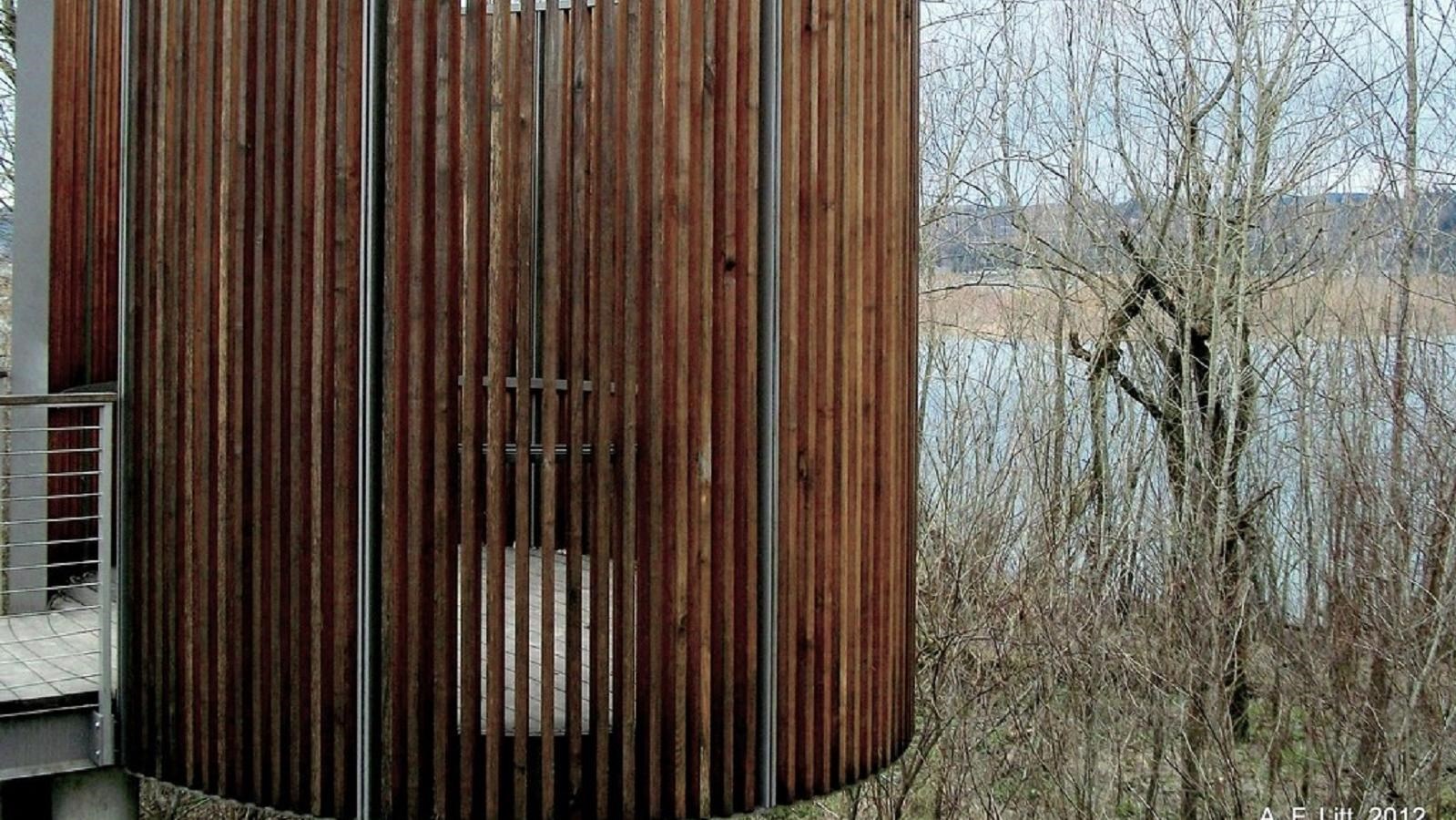Last updated: May 27, 2021
Place
Confluence Bird Blind at the Sandy River Delta

"2012-05-21" by A. F. Litt is licensed under CC BY-NC-ND 2.0
Historical/Interpretive Information/Exhibits, Information, Parking - Auto, Scenic View/Photo Spot, Trailhead, Wheelchair Accessible
Lewis and Clark NHT Visitor Centers and Museums
This map shows a range of features associated with the Lewis and Clark National Historic Trail, which commemorates the 1803-1806 Lewis and Clark Expedition. The trail spans a large portion of the North American continent, from the Ohio River in Pittsburgh, Pennsylvania, to the mouth of the Columbia River in Oregon and Washington. The trail is comprised of the historic route of the Lewis and Clark Expedition, an auto tour route, high potential historic sites (shown in black), visitor centers (shown in orange), and pivotal places (shown in green). These features can be selected on the map to reveal additional information. Also shown is a base map displaying state boundaries, cities, rivers, and highways. The map conveys how a significant area of the North American continent was traversed by the Lewis and Clark Expedition and indicates the many places where visitors can learn about their journey and experience the landscape through which they traveled.
I try to give people a different way of looking at their surroundings.
-Maya Lin
When you enter the restored forest ecosystem at Sandy River Delta, you’ll encounter an elliptical bird blind, which embodies Confluence Project’s commitment to sustainability and ecologically aware artistry. Stroll up a gently curving 150-foot ramp to the bird blind, constructed of sustainably harvested, durable black locust wood.
From this quiet spot, you can view birds and wildlife that inhabit the area today as you learn about the flora and fauna–some of which are now extinct, endangered or threatened–that existed here 200 years ago. The artwork serves as a lasting reminder of the impact humans have had on the environment and a model for a new way to envision the connection between people and the natural world.
The site was formally dedicated August 23, 2008, with more than 500 people attending.
The Bird Blind
A 1.2-mile trail, built primarily by volunteers, leads from the parking lot to Maya Lin’s elliptical bird blind. The wood used to build the bird blind comes from the black locust tree, a long-lasting, sustainable hardwood that is considered invasive in the Northwest. Using locally harvested black locust for this project supports efforts to eradicate the tree from native forests and reinforces the Confluence Project’s goal of promoting sustainability. The vertical wooden slats of the bird blind are inscribed with the name and current status of each of the 134 species Lewis and Clark noted on their westward journey.
Project Partners
The Sandy River Delta site was built by James E. John Construction, of Vancouver, and Krekow Jennings Inc., of Seattle. Other key partners include the Oregon Department of Transportation, which built a new, safer deceleration lane at Exit 18 on westbound Interstate 84; the U.S. Forest Service, who owns the land at the site; and the Oregon National Guard, who built a new parking lot at the site as part of a training mission.
Directions to Sandy River Delta
The Sandy River Delta is just north of I-84 off Exit 18. Driving east, exit the freeway and turn right at the T, go under the overpass and enter the park at the sign. If you’re driving west on I-84, take Exit 18 and take an immediate right. At the parking lot, look for the gravel path marked “Confluence.” Follow the path for 1.2 miles to reach the Bird Blind.
About Confluence
Confluence connects you to the history, living cultures, and ecology of the Columbia River system through Indigenous voices. We are a community-supported nonprofit that works through six art landscapes, educational programs, and public gatherings in collaboration with northwest tribes, communities, and the celebrated artist Maya Lin. For more information, call (306) 693-0123.
